Supplies and Materials
Below is information on the supplies and materials used in the treatments and enclosures included in this manual. Entries are grouped in the following categories: Adhesives, Fasteners, Filaments, Tapes, Prefabricated Enclosures, Cloth, Non-Wovens, Board Stock, and Paper.
Adhesives
PVA/PVA Mixture
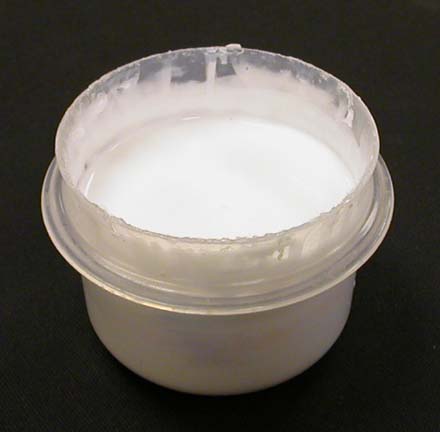
Polyvinyl acetate (PVA) is a liquid adhesive that we use for many things here in our lab, such as adhering cloth to board, building boxes out of binder’s board, putting down endpapers, and adhering spine linings. We use Jade 403, a Poly(vinyl acetate/ethene) copolymer P(VAC/E). It is pH neutral. It is not easily reversible, however. Because PVA is a liquid of high surface tension, its application meets with considerable brush drag. Thus, it is not the adhesive of choice for large surfaces unless board-to-board joints are involved. PVA is used for all such joints.
PVA mixture is a 50/50 mixture of PVA and methyl cellulose. It sets a bit more slowly than PVA, allowing for an extended working time. The methyl cellulose facilitates application by serving as a surfactant, reducing surface tension and thus reducing brush drag. For most work, we use mixture rather than straight PVA because it is easier to manage. Also, for applications other than board-to-board joints, there is no appreciable difference in bond strength between straight PVA and mixture.
Methyl Cellulose
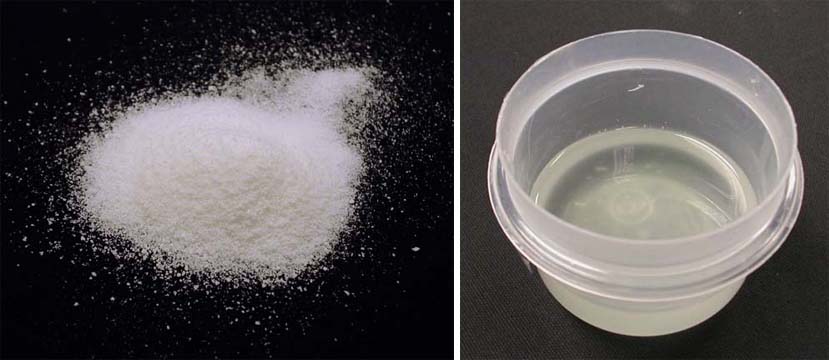
This non-toxic, plasma-consistency substance is a weak adhesive. However, our main use for it, in its pure state, is for cleaning the spines of books which are being re-cased or put into new cases. Methyl cellulose serves as an excellent solvent of hide glue, some modern adhesives, and will to some degree soften PVA, given sufficient time to do so. It is also the additive used with PVA to make PVA mixture. Methyl cellulose is purchased in powdered form and mixed with water to bring it to its usable state. The powder is of a somewhat granular texture. As a result, the use solution has a slightly granular consistency as well; rather like tapioca, but to a less pronounced degree.
Wheat Starch Paste
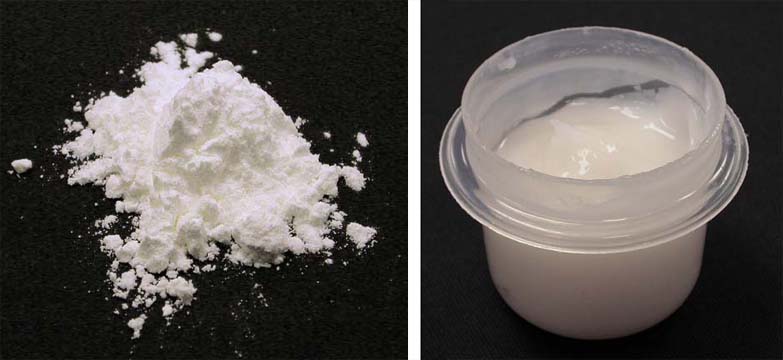
Wheat starch paste is is a smooth adhesive that is used for paper-to-paper adhesion, and when reversibility is important. We use it for a variety of things, including mending paper tears and adding a barrier layer of Japanese paper to the spine of a text block before adhering a cloth spine lining with PVA mixture. Wheat starch paste is purchased as wheat starch powder and mixed with water, either in the sauce cooker or in a microwave oven. The starch is highly refined and closely resembles cornstarch. After cooking, the paste is cooled, then strained using a horsehair or nylon strainer, and stored in a clean, airtight jar. Once mixed into paste, it will keep a few days without refrigeration, or up to about a week in the fridge. Covering the paste with water also helps it last longer.
Fasteners
Rivets
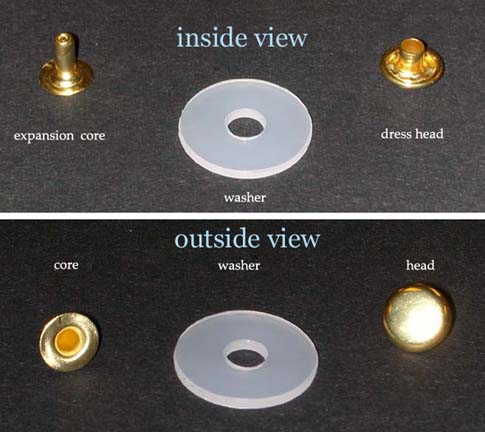
These are used for phase boxes. Views from both ends of the rivets are shown in the illustration. The “outside view” pictures the ends that will show when the rivets are installed. The core is smaller in diameter than the dress head and thus fits inside it. It simply expands inside the dress head and locks the two halves of the rivet together when the rivet is bucked in the rivet bucker. The hole in the washer is aligned with a hole in the board, on the outside (gray side). The core is pushed through the hole from the inside (white side), so that it protrudes through the board and the washer on the gray side. The dress head is snapped onto the core, the flared end of the core is positioned on the conical pin of the rivet bucker’s mandrel, and the rivet is bucked together.
Screw Posts
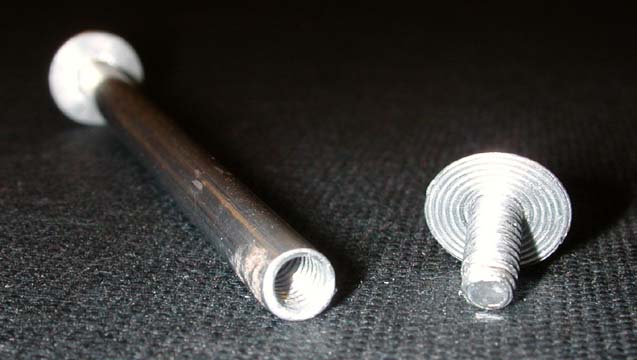
These are used for post bindings. They are tapped with bolt threads and simply screw together. They are 1/4″ in diameter and are available in a variety of lengths, from about 1/2″ to 3″. Also available are ¼” and ½” extensions. These can be had in aluminum or brass.
Staples
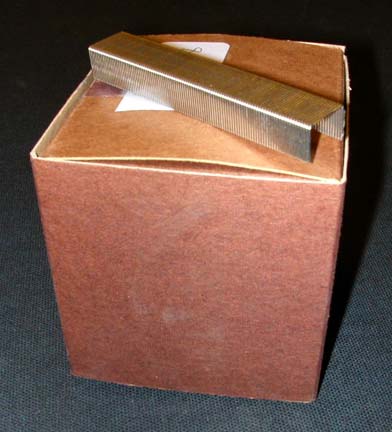
Only stainless steel staples are used in conservation work. The reason for this is of course the fact that they don’t rust. Old non-stainless steel staples are removed and replaced. These staples are available in different lengths; those we use are ¼”, 3/8″, and ½”.
Filaments
Linen Thread
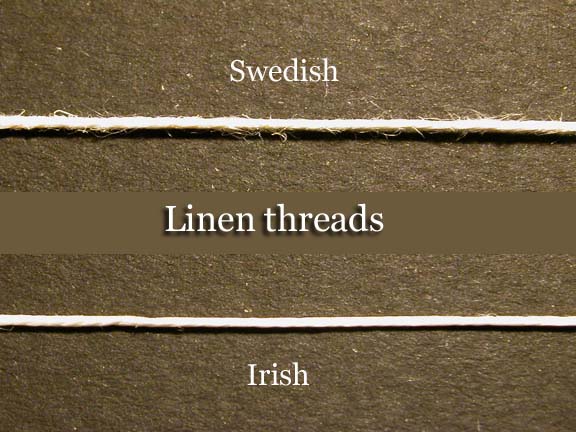
Linen thread is used for almost all the sewing we do. It is a three-ply thread, and we keep several thicknesses in stock. We use a fairly thick thread, 18/3, for pamphlet sewing and for sewing on most endsheets. We also have thinner threads on hand for more delicate sewing, such as 20/3, 25/3, 35/3, and 60/3. The “3” represents the ply and the first number is the thickness.
Waxed Thread
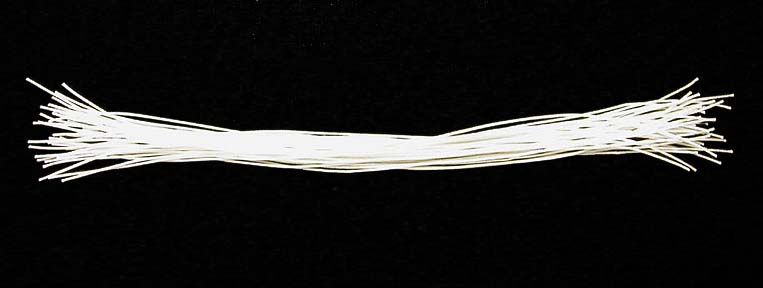
This is used in the closures of phase boxes.
Cotton Twine
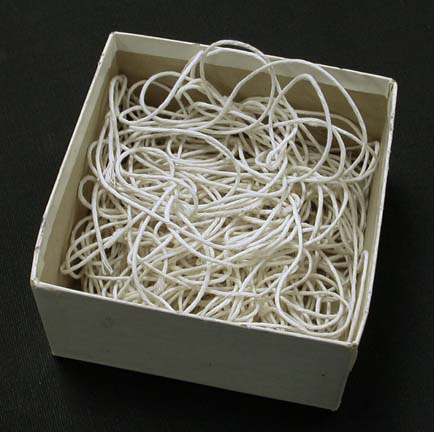
Cotton twine is used chiefly for making headbands and for reinforcing the cover material of cases at the top and bottom of the spine. The gauge or diameter used is the one most commonly called “16 ply” by manufacturers.
Tapes
Cotton Tying Tape
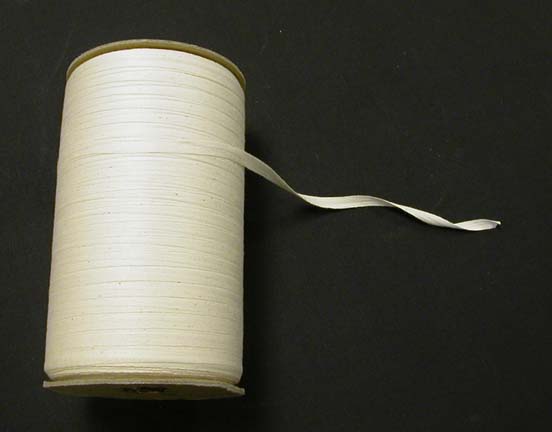
Cotton tying tape is used as a temporary measure to tie damaged volumes and to keep multi-part items together while they await treatment or during transport. It is also used as a minimal stabilization measure for certain low-use materials.
Double-Sided Tape
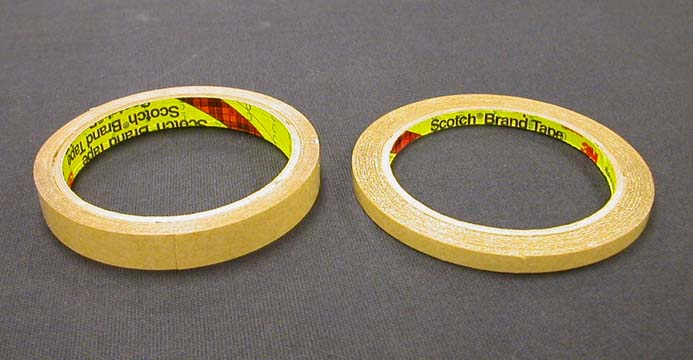
This 3M 415 double-sided tape is pressure-sensitive and, as the name suggests, has adhesive on both sides. The outer surface is protected by a layer of release paper, which is peeled off when the tape is used. It is used only for making enclosures, never affixed directly to a collection item.
Linen Tape
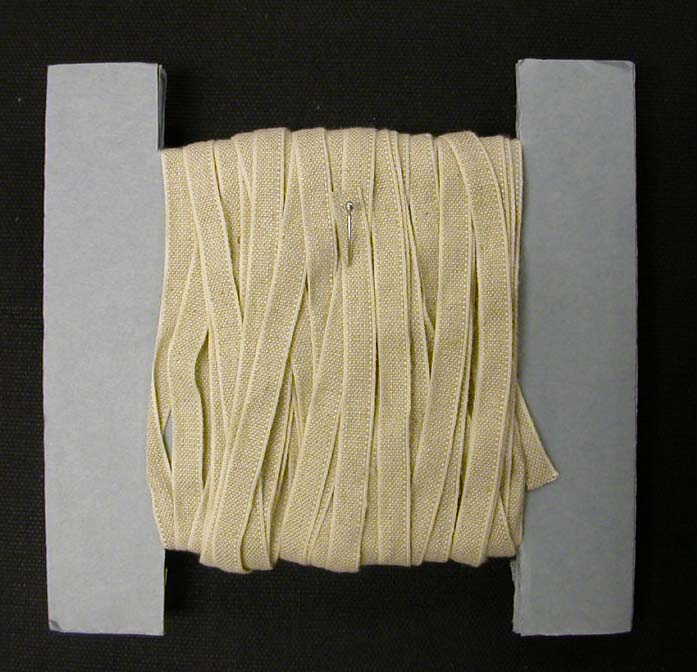
This tape is used for making books of sewn-on-tapes construction, to make the ties for portfolio-type enclosures, and to make the lifting tapes of built-up enclosures.
Prefabricated Enclosures
Pamphlet Binders
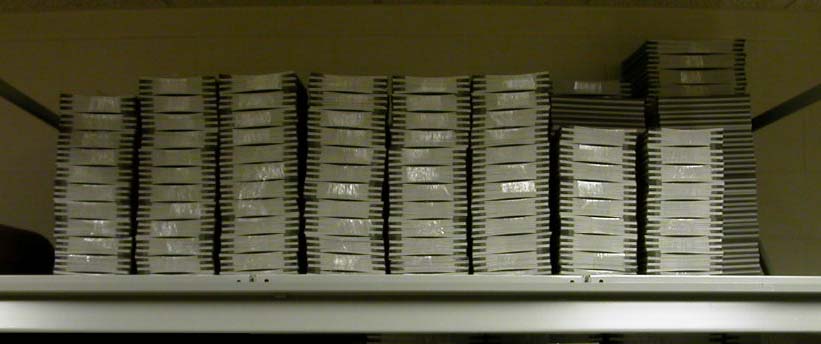
Our lab does a large amount of pamphlet binding, for music scores and other publications. We order binders with the security strip built in. This alleviates the need for our students to be ever-conscious of remembering to include one, and it saves a bit of time as well. We order binders in multiple sizes, and we use the type with clear covers for music scores.
Acid-Free Envelopes
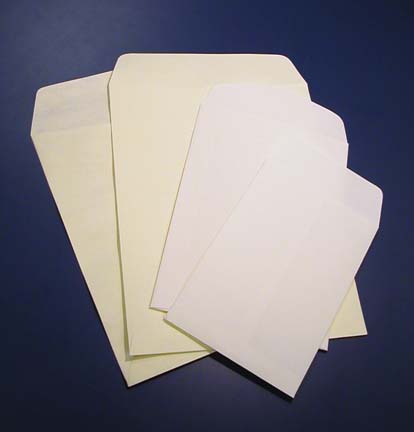
These are affixed inside pamphlet binders and are used primarily for pamphlet-sized materials which are unsuitable for either stitching or stapling directly into the binders. The most common reason for this unsuitability is fragility, and for these materials a sleeve is also made to facilitate removing the item from and returning it to the envelope without damaging it.
Cloth
Buckram Book Cloth
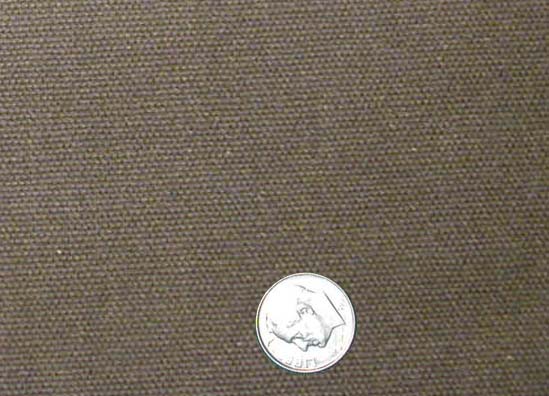
This is a heavy, durable cloth which is starched for stiffness. Buckram is a good utility cloth, used for the spines of wrappers, pamphlet binders made in-house, and grey/white board portfolio enclosures.
Canapetta Book Cloth
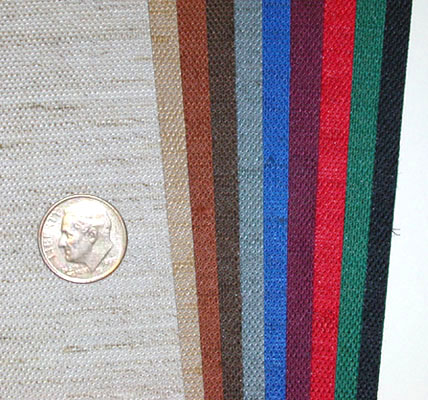
This is an Italian book cloth that is durable, fairly resistant to staining from adhesives, and pleasing to the eye. Its prominent counter-grain provides the tactile and visual sensation of strength. It comes in a wide variety of colors and works well for all repairs, cloth-covered enclosures, and new cases for books.
Cialux Book Cloth
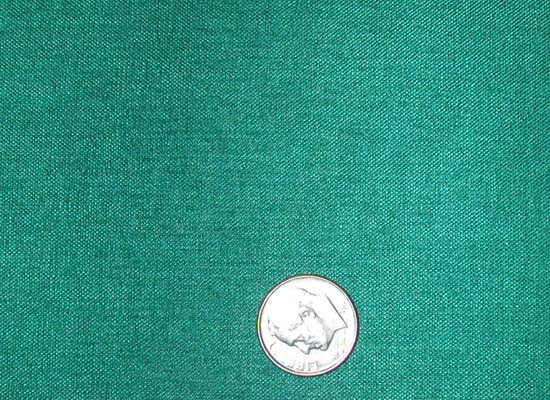
This book cloth is highly flexible, has a smooth texture and a fine weave, and comes in a variety of colors. However, it is less forgiving than Canapetta in regard to glue staining, if adhesive comes in contact with the show side of the fabric.
Spine Cloth
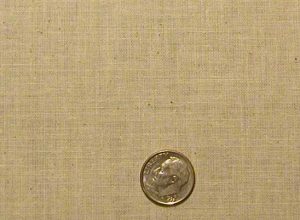 The spine lining cloth, or super, lines the spine to protect the sewing and attaches the text block to the cove. We keep two types of super cloth on hand, flannel-backed variety and a medium weight muslin. Many books are bound using a thin gauze-like cloth to hold the book together. Not surprisingly, this type of super tends to fail, so although it is still available (and still widely used for new books), we abstain from using it.
The spine lining cloth, or super, lines the spine to protect the sewing and attaches the text block to the cove. We keep two types of super cloth on hand, flannel-backed variety and a medium weight muslin. Many books are bound using a thin gauze-like cloth to hold the book together. Not surprisingly, this type of super tends to fail, so although it is still available (and still widely used for new books), we abstain from using it.
Stretch Cloth
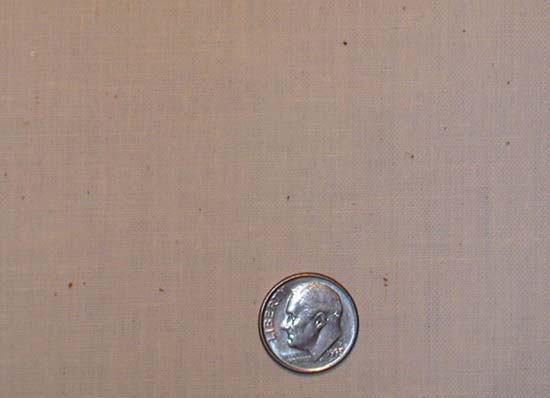
This is used for the super of adhesive-bound books bound by the double-fan process we use here. Because it is stretchy, it allows the book to lay flat when opened, reducing the potential for damage due to over-opening, as when photocopying.
Hinge Cloth
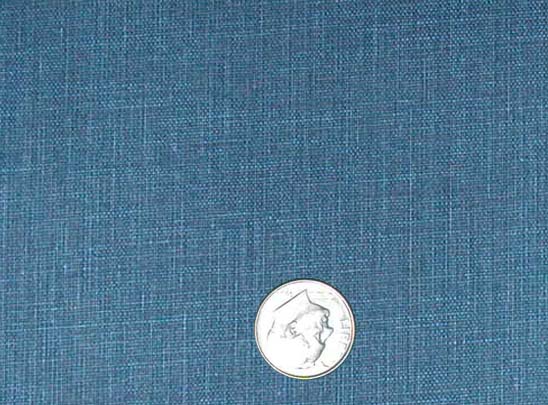
This is a thin linen which has been starched or sized and is quite strong for its weight. It is the material used for the hinges of new end sheets and for new headbands of books receiving higher-level treatments.

Here is pictured hinge cloth in the pre-cut form in which it is normally used.
Non-Wovens
Polyester (Mylar)
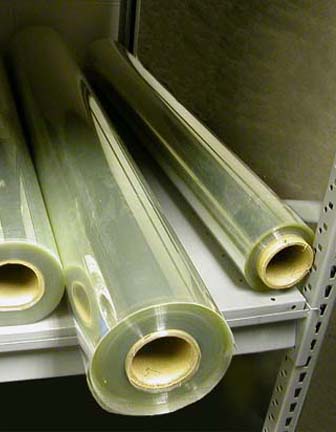
Mylar is mostly used for the encapsulation of flat materials. It is available in a variety of thicknesses, which are measured in “mils”. The mil is not a metric unit of measure; one mil equals .001″ (1/1000″ or one one-thousandth of an inch). Thus, a “mil” is the same as a “point”, the unit of measure used for the thickness of card and folder stock. The thickness range of the mylar we use is 2 mil to 5 mil. 2 mil is normally used for the encapsulation of small materials, such as 8.5″ x 11″ documents. 5 mil is used for items such as large maps and posters. Mylar can be bought in rolls, but we also keep pre-cut sheets on hand.
Reemay
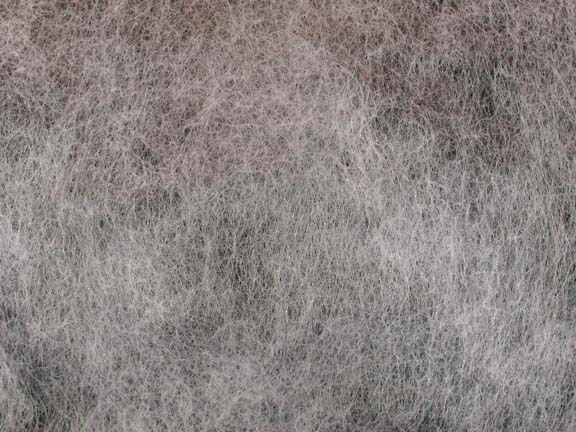
Reemay is a spun polyester fiber sheet material. It repels the adhesion of wheat starch paste. It allows the migration of water and water vapor (e.g., into blotter paper). It is available in different thicknesses, from the gossamer-thin, cobweb-like variety shown in the illustration to a more substantial and thus more opaque material. The thicker material is actually the one more commonly used, but the thinner type better serves the purpose of illustrating the character of its fiber structure.
Tyvek
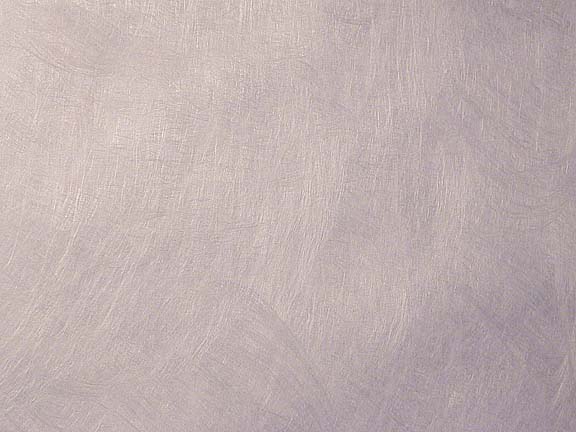
This is a paper-like fibrous plastic material. Our primary use for Tyvek is the making of custom envelopes for oddly-shaped or oversize materials which are suitable for an envelope-type enclosure. Its main advantage over paper for this application is its high resistance to tearing. Since the orientation of the fibers is random, it has no grain direction, unlike most of the various types of papers, cloths, and boards we use. Consequently, the use of scraps is optimized.
Board Stock
Corrugated Board
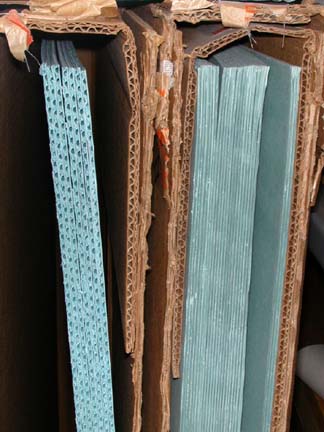
This acid- and lignin-free corrugated board maintains a pH of 8.0-9.5 and carries a 3% alkaline buffer. It is available in two weights, both of which are available in large (40″ x 60″) sheet sizes. These are used to construct enclosures.
Binder’s Board
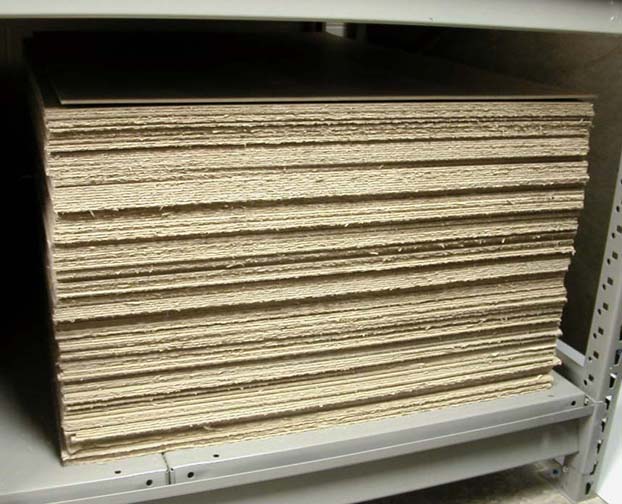
This is a material used for making covers for books and for making cloth-covered enclosures. It is available in a variety of thicknesses, and the board we use most often here is .098″ (about 2.5 mm) thick. It is made of a dense card material, and its stiffness makes it ideal for use in the casing of books. Like all the board we use, it has grain direction.
Folder Stock
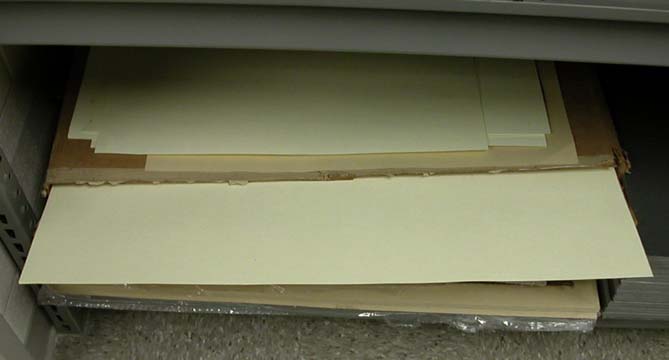
This acid-free sheet material is available in different thicknesses, which are measured in “points.” One point equals .001″ (or 1/1000″ or one thousandth of an inch). The gauges we use are 10-point, 20-point, and 40-point. As a reference, the average business card is normally made from 10- to 15-point stock. The 10-point folder stock is the one we use the most here in our lab. It is used for the inner enclosures of wrapper-type enclosures. 20- and 40-point stock are most often used for the inner enclosures of larger structures such as portfolio-type enclosures, and sometimes for applications such as the construction of partitions within enclosures.
Gray-White Board
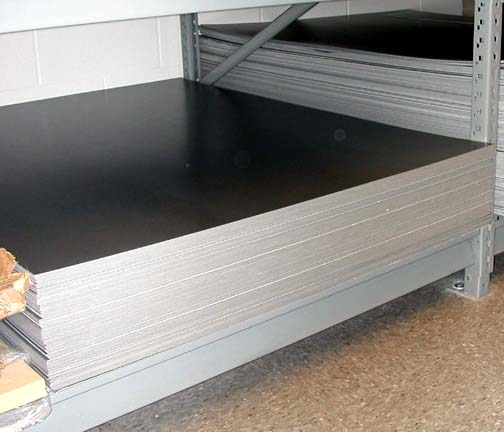
Gray/white board is generally used in making enclosures, such as custom pamphlet binders. It has a somewhat glossy coating and unlike binder’s board it is normally used bare rather than covered. It is also much more flexible than binder’s board. Due to these characteristics, it is not suitable to serve as the boards of new cases for books.
Paper
Blotter
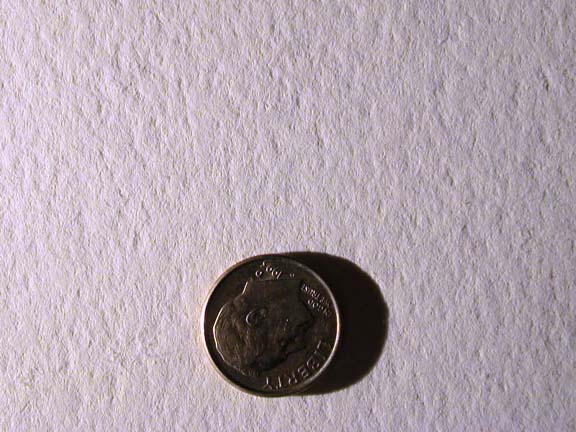
This is used to extract moisture away from flat paper mends and sometimes for interleaving wet books. As can be seen in the side-lighted photo, its surface is somewhat textured. The fiber content of the blotter we use is pure cotton, as it has a high capacity for absorption.
Japanese Paper
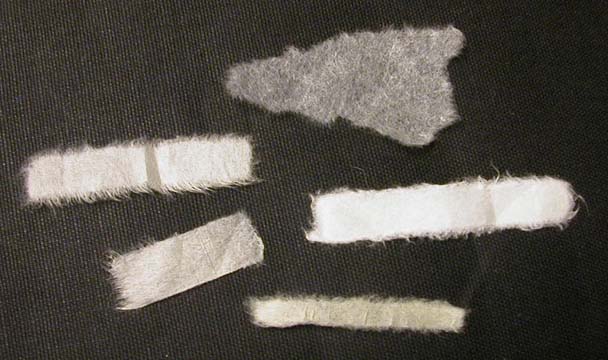
The long fibers of this paper makes it quite strong for its thickness. As such, it is the material of choice for paper mending, guarding folds, hinging in loose pages, and making a reversible barrier layer on the spine of a book.
Mohawk Superfine Paper
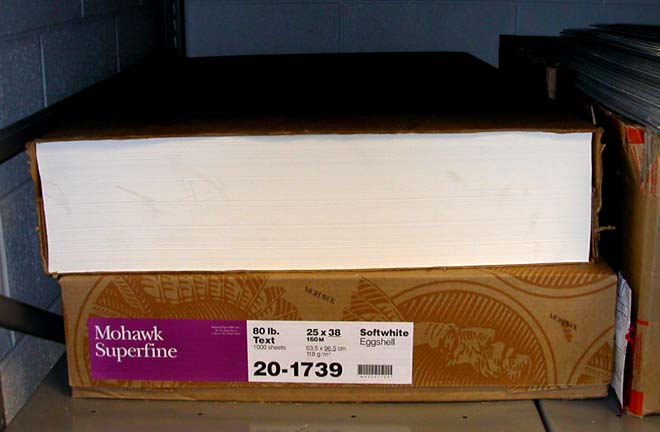
This 80 lb. paper is used for spine linings and end sheets. We keep it in two colors (white and off-white) and two finishes (smooth and eggshell). Its grain runs long (lengthwise) when drawn as a full sheet from the box.
Acid-Free Paper
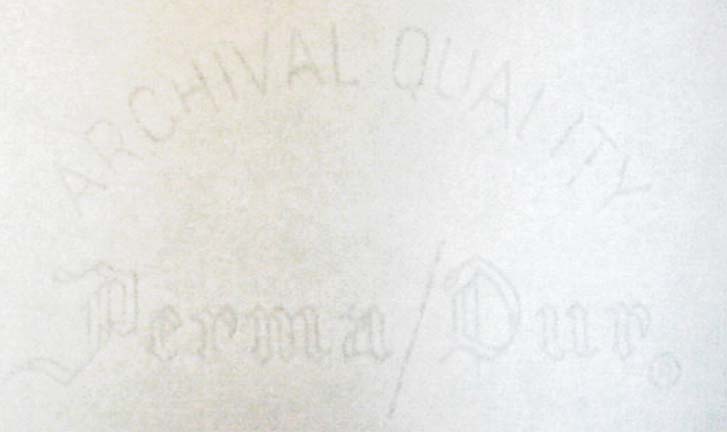
Regular copier paper is used for the routine business of the lab, but archival paper is used for anything that is going to become part of a book or an enclosure. This would include replacement pages and copies of decorative or informational endpapers. Archival paper is often identifiable by a watermark, as shown in the enhanced-contrast illustration.
